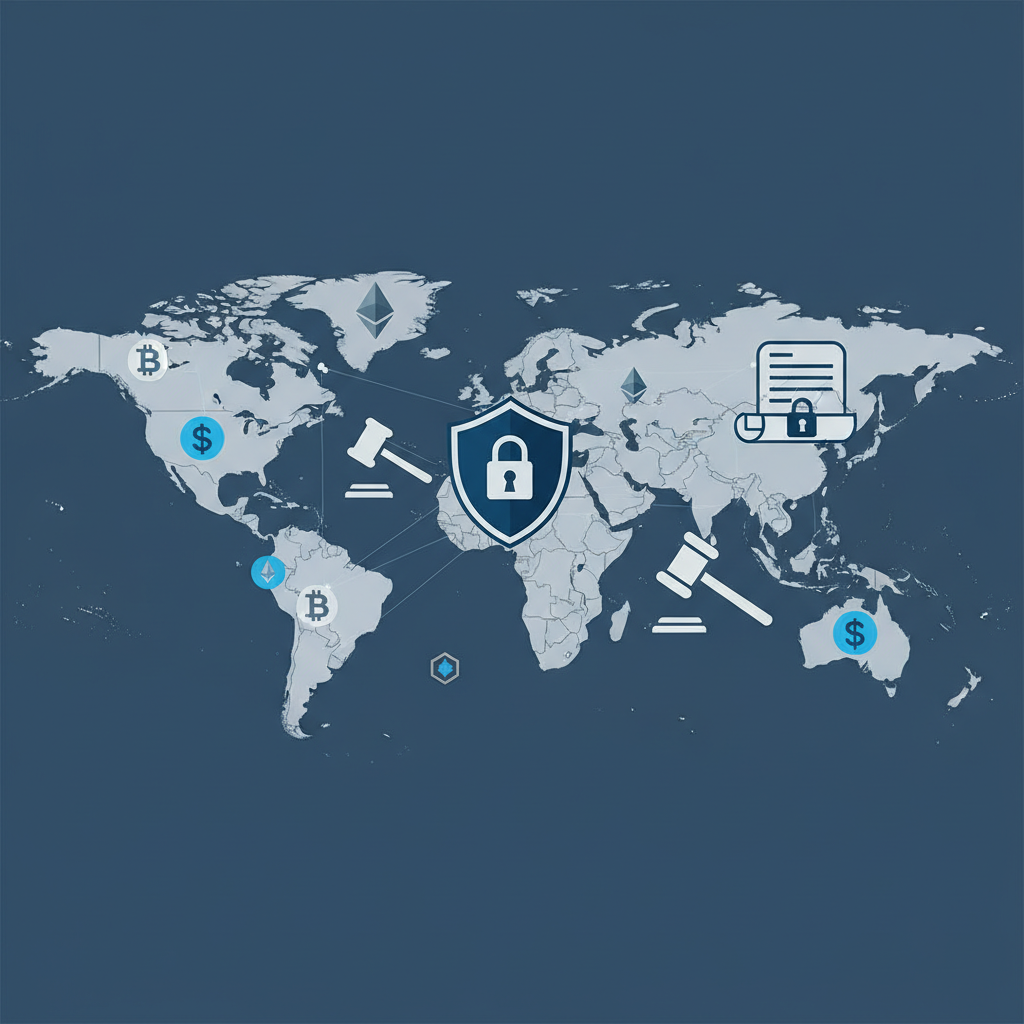Global cryptocurrency regulatory framework
The global regulatory framework for cryptocurrencies reflects a variety of approaches seeking to adapt to the rapid growth of the digital market. Countries like the United States and the European Union are leading the way with clear and structured frameworks.
These regulations aim to balance technological innovation with the need to protect consumers and prevent illicit activities. Harmonization across regions is a key objective to avoid regulatory arbitrage.
Global regulation also responds to the growing integration of cryptocurrencies into the traditional financial system, which requires robust and flexible regulations that can evolve with the market.
Regulation in the United States and the European Union
In 2025, the United States passed the GENIUS Act, which establishes a clear regulatory framework for stablecoins, strengthening oversight and transparency in this segment. This step seeks to build confidence among users.
In the European Union, the MiCA regulation, in force since 2023, creates a comprehensive system for regulating cryptoassets and service providers, with an emphasis on consumer protection and market stability.
Both jurisdictions work together to avoid regulatory arbitrage, aligning criteria that promote legal certainty without hindering technological innovation.
Focus on Asia and the Middle East
In Asia, Singapore has adopted prudential regulations that allow the use of cryptocurrencies as a means of payment, fostering a favorable environment for financial innovation.
On the other hand, Saudi Arabia maintains a more cautious stance by prohibiting banking operations involving cryptocurrencies without declaring them illegal, reflecting a policy of risk vigilance.
These differences highlight regional diversity, with each country seeking to balance sector development with mitigating risks associated with the crypto market.
Regulation in Latin America
Latin America is gradually making progress in cryptocurrency regulation, adapting to the growing adoption and associated risks. Countries are seeking a balance between innovation and oversight.
Regulations in the region tend to focus on preventing money laundering, protecting users, and legitimizing the use of crypto assets, with regulators becoming more active in the financial arena.
Regulatory developments also reflect the need to integrate cryptocurrencies into the formal financial system, strengthening oversight and adopting international legal frameworks.
Laws and regulations in Mexico
Mexico has had the Fintech Law since 2018, which recognizes cryptocurrencies for payments and financial services. This law establishes strict controls to prevent money laundering and promote transparency.
Service providers must register and comply with specific obligations, ensuring a framework that enables financial innovation without sacrificing legal certainty.
This approach has boosted the legitimacy of cryptocurrencies in the Mexican market, encouraging their adoption while maintaining state oversight.
Advances in Peru and Uruguay
Peru and Uruguay have adopted regulatory frameworks that incorporate virtual asset service providers under the direct supervision of their central banks.
These regulations are primarily aimed at preventing money laundering and effectively regulating cryptocurrency transactions, strengthening control measures.
The regional approach demonstrates gradual progress toward the formal integration of cryptocurrencies into national financial systems, providing greater confidence.
Supervision and control in Brazil
In 2023, Brazil implemented a regulation that places the Central Bank as the direct supervisor of crypto assets, with a strong emphasis on preventing fraud and money laundering.
Brazilian legislation specifically considers stablecoins as a means of payment, marking a difference in their regulated use compared to cryptocurrencies as an investment.
This model seeks to foster market confidence, while also ensuring rigorous oversight that protects both the financial system and its users.
Implications of regulation for the crypto market
Crypto regulation has a crucial impact on preventing money laundering, fraud, and consumer protection, factors that strengthen market confidence.
These regulations seek to balance technological innovation with mechanisms that ensure the security and transparency of operations against illegal risks.
Regulatory development contributes to a more stable market, where users and businesses can operate with greater legal certainty and less exposure to illicit activities.
Prevention of money laundering and fraud
The regulation establishes rigorous controls to detect and mitigate money laundering and the financing of illegal activities through cryptocurrencies.
Obligations such as user identification and transaction monitoring allow authorities to monitor suspicious flows and respond more quickly.
This oversight strengthens the sector's transparency, deterring the use of cryptocurrencies for fraud and ensuring a safer environment for all participants.
Consumer protection and market confidence
The regulations include specific measures to protect consumers, such as information transparency and clear rules for crypto service providers.
Increased public confidence translates into greater adoption and market stability, encouraging new investment and fostering safe innovation.
Thus, regulation not only reduces risks but also contributes to consolidating sustainable and reliable models in the cryptocurrency-based digital economy.
Challenges and future trends in crypto regulation
Crypto regulation faces constant challenges due to the global and dynamic nature of the digital market. International convergence is a key trend toward achieving a uniform and effective framework.
Furthermore, the phenomenon of tax havens represents a significant challenge, as it facilitates regulatory evasion and hampers global control over cryptocurrency operations.
These elements mark the future of regulatory policies, aimed at balancing technological innovation with financial and legal security worldwide.
International convergence and regulatory harmonization
International convergence seeks to reduce regulatory differences between jurisdictions, promoting a more secure and coherent crypto market. This facilitates cooperation between countries.
Harmonizing regulations such as the GENIUS Act in the U.S. and the MiCA regulation in Europe helps avoid regulatory arbitrage that could harm global market stability.
Global coordination ensures common standards in risk prevention, transparency, and consumer protection, essential elements for trust and mass adoption.
International organizations play a decisive role in promoting these policies, fostering agreements that benefit joint regulation and supervision.
Impact of tax havens on cryptocurrencies
Cryptocurrency tax havens facilitate the concentration of operations with little or no oversight, which can increase the risks of money laundering and tax evasion.
These territories offer lax regulatory incentives, attracting users and entities seeking to avoid strict controls, complicating coordinated global regulation.
The challenge lies in balancing the financial innovation that these spaces foster with the need for a regulatory framework that prevents abuse and promotes legality.
Interesting fact about tax havens
Some tax havens are adopting advanced technologies to attract crypto investments, but this also draws international suspicion and pressure to regulate and be transparent.
This phenomenon is driving the search for international mechanisms that allow for the monitoring and control of financial flows without sacrificing economic competitiveness.






